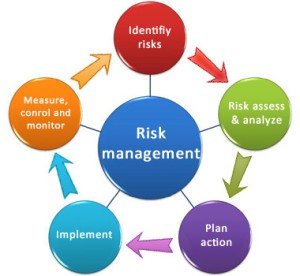
Every business faces risks every day, from the smallest sole proprietorship to the largest multinational corporation. These risks can come in many forms, including financial, operational, legal, and reputational. Without proper risk management strategies in place, businesses may find themselves facing costly and potentially damaging consequences.
In this guide, we will explore the basics of risk management and provide essential strategies that every business should implement to mitigate potential risks and protect their bottom line.
What is Risk Management?
Risk management is the process of identifying, evaluating, and controlling potential risks that could impact a business. It involves assessing the likelihood and severity of potential risks and developing strategies to minimize or avoid them. Effective risk management allows businesses to make informed decisions, allocate resources appropriately, and maintain stability in the face of uncertainty.
The Importance of Risk Management
Without proper risk management, businesses may be vulnerable to a wide range of potential threats. These could include financial losses due to market fluctuations or economic downturns, operational disruptions from equipment failures or natural disasters, legal liabilities from lawsuits or regulatory non-compliance, and damage to reputation from negative publicity. In addition to these tangible risks, businesses may also face intangible risks such as cyber-attacks or data breaches.
Proper risk management strategies can help businesses anticipate and prepare for potential risks, reducing the likelihood of negative consequences and protecting their assets and reputation.You can also read How to Develop a Unique Selling Proposition in 2023.
One of the most essential components of risk management is identifying and implementing strategies to mitigate potential risks. Here are some key strategies that every business should consider:
Investing in General Liability Insurance
General liability insurance is a type of insurance that provides coverage for legal fees, medical expenses, and damages if someone sues your business for bodily injury or property damage. It can also cover libel, slander, and copyright infringement claims. General liability insurance can provide valuable protection for businesses of all sizes, as legal fees alone can add up to tens or even hundreds of thousands of dollars.
The cost of general liability insurance varies based on factors such as the type of business, the level of risk involved, and the coverage limits desired. On average, small businesses can expect to pay between $400 and $600 per year for general liability insurance.
Conducting Regular Risk Assessments
Risk assessments involve identifying potential risks that could impact a business and evaluating their likelihood and potential impact. This process allows businesses to prioritize their risks and develop strategies to address them effectively. It is essential to conduct risk assessments regularly, as new risks may emerge over time, and existing risks may evolve or change in severity.
Diversifying Investments and Business Operations
Investing in a diverse range of assets can help mitigate financial risks by reducing the impact of market fluctuations or economic downturns on a business’s bottom line. Similarly, diversifying business operations can help reduce operational risks by spreading out potential disruptions across multiple areas. For example, a business that relies heavily on a single supplier may face significant risks if that supplier goes bankrupt or suffers a natural disaster.
Implementing Cybersecurity Measures
As technology becomes increasingly integrated into everyday business operations, the risk of cyber-attacks and data breaches continues to grow. Businesses must implement robust cybersecurity measures to protect their sensitive data and systems from malicious actors. This could include implementing firewalls and antivirus software, regularly updating security protocols, and conducting employee training on safe internet practices.
Conclusion
The importance of risk management cannot be overstated for businesses of all sizes and industries. By implementing effective risk mitigation strategies, businesses can minimize potential risks and protect their assets, reputation, and bottom line. As the business landscape continues to evolve, it is crucial for businesses to regularly assess their potential risks and adapt their risk management strategies accordingly. With proper risk management in place, businesses can confidently navigate uncertain environments and thrive in the face of challenges.
So, take the time to evaluate your business’s risk management practices and make any necessary adjustments to ensure its long-term success.


